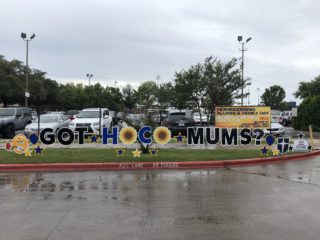When marketing, sales and ops work together, whether in fundraising or in the corporate world, usually there is a tale of witches, goblins, vampires and more. This year’s HOCO Mums sales at one local high school were a ghost of a different color. When marketing, sales and ops worked together, it became a success worthy of a marketing case study.
Homecoming Mums are a long-standing Texas tradition. If you are not familiar, read more here on the fall tradition and why Texans do it.
Recently one mom said that at her high school this year, mum sales were down. Not the case at this local high school. Insert the mummy marketing case study.
Historically mum sales were flat, and in fact, declined in 2016. In 2017, the Chair of the Homecoming Mum initiative was determined to buck the trend. She instituted digital operational systems for tracking inventory and orders that had never been done before. In addition, her incoming Chair, one that has a working role two years before the Chair-ship, developed a project and communications timeline. Sales that year increased by 15%.
The 2018 Mum sales are tracking at an increase of 14% over previous year and still growing.
What happened differently to make this a marketing case history?
Mummy Marketing Case Study
The implemented plan integrated a sales plan, an operational plan and marketing plan.
The operations developed over the previous year were enhanced even further. There was now at least one year’s history in which to reference. Inventory could be managed tighter which lowered cost and waste.
A sales strategy developed the previous year due to unforeseen circumstances was replicated. We could tell you what it was, but then we would have to send the headless horseman after you.
The marketing strategy, plan and execution was further enhance and defined and included:
- Signage – At the front of carpool every morning for three mornings before the sales deadline was highly visible at the school.
- Social media – A targeted campaign was executed with professionally designed messages and graphics. Content was posted on a consistent basis with relevant messaging.
- School communication – Blurbs in the weekly parent email communication vehicle were increased.
We are proud of this marketing case study that resulted in more dollars raised for the school’s athletic program. Want to learn more? We would love to help your non-profit organization. We are passionate about increasing fundraising efforts. Call us.

